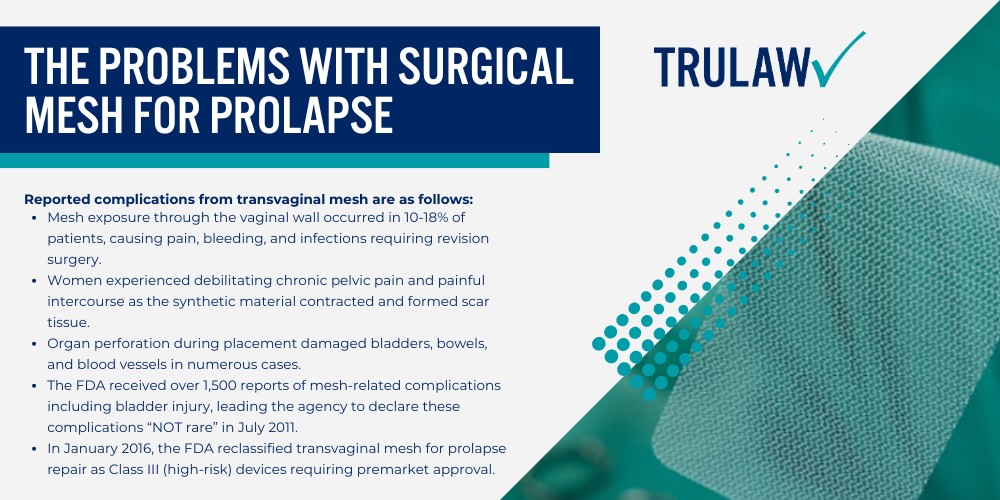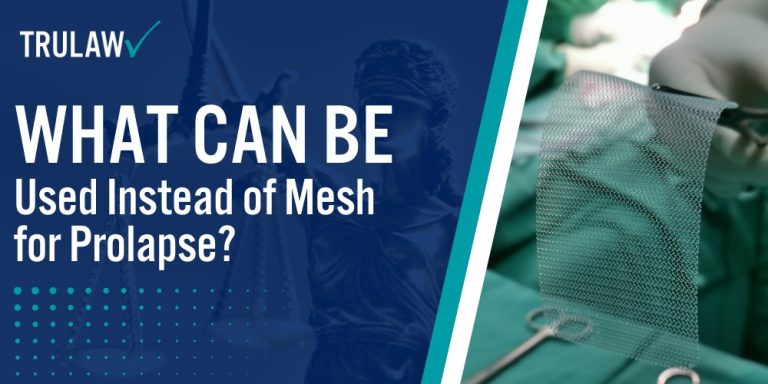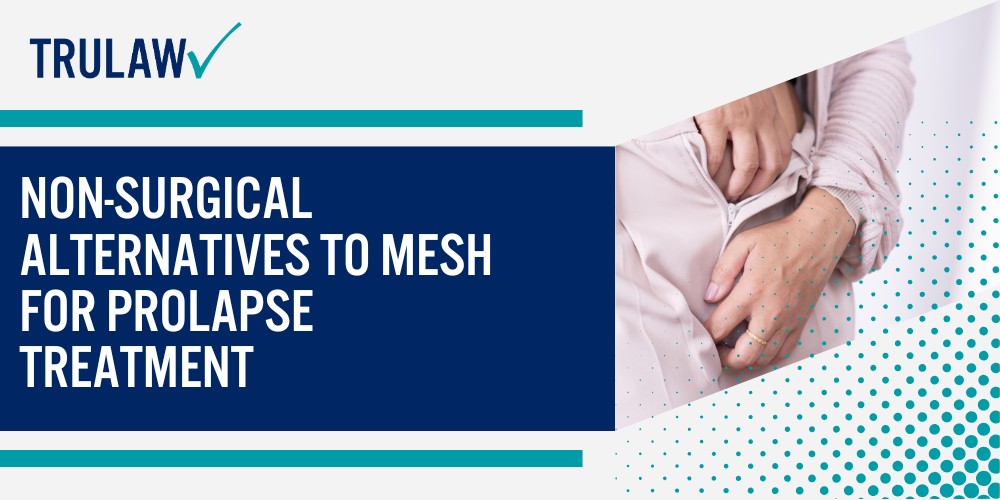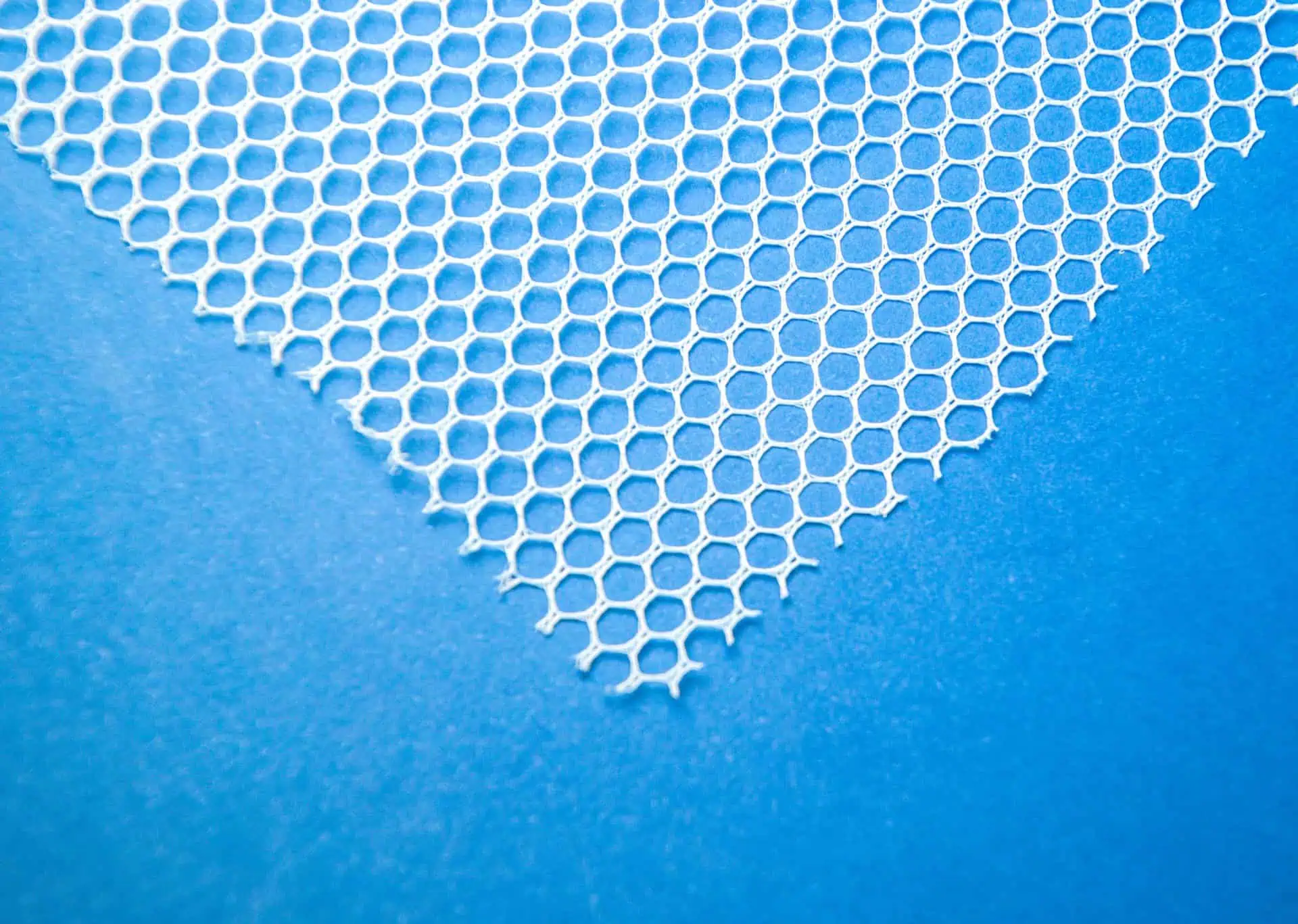Pelvic organ prolapse represents one of the most common yet undertreated conditions affecting women’s health, particularly as they age.

The complications from transvaginal mesh used for vaginal prolapse that prompted the FDA ban highlighted the importance of choosing treatment options that prioritize both effectiveness and safety.
What Is Pelvic Organ Prolapse?
Pelvic organ prolapse occurs when the muscles and connective tissues providing pelvic organ support become weakened or damaged, allowing the bladder, uterus, or rectum to descend into or beyond the vaginal canal.
This condition develops gradually as supportive structures lose their strength due to multiple factors.

Contributing factors and risk elements include, but are not limited to:
- Childbirth stands as the leading cause, with vaginal deliveries causing stretching and potential tearing of pelvic floor muscles and fascia.
- The risk increases with each pregnancy and delivery, particularly with prolonged labor or delivery of large babies.
- Aging and menopause contribute substantially to prolapse development as declining estrogen levels reduce tissue elasticity and strength.
- Additional risk factors include chronic straining from constipation or coughing, repetitive heavy lifting, obesity, and genetic predisposition affecting connective tissue quality.
The severity of pelvic organ prolapse varies considerably among women, classified using the Pelvic Organ Prolapse Quantification (POP-Q) system into stages I through IV.
Stage I genital prolapse remains above the hymen and typically causes minimal symptoms, while stage IV represents complete vaginal eversion with organs protruding beyond the opening.
Common symptoms include a sensation of vaginal bulging or pressure, difficulty emptying the bladder or bowel, urinary leakage, urinary urgency or frequency, and discomfort during sexual intercourse.
Approximately 40-50% of women who have given birth experience some degree of prolapse, though many remain asymptomatic and undiagnosed.
For women suffering from prolapse, the impact on daily life ranges from minor inconvenience to severe disability, affecting work capacity, physical activities, and intimate relationships.
Women with advanced prolapse often report feeling self-conscious about their condition and experience anxiety about prolapse worsening during normal activities.
The Problems with Surgical Mesh for Prolapse
Transvaginal mesh emerged in the early 2000s as surgeons sought more durable solutions for prolapse repair following disappointing recurrence rates with traditional tissue repairs.
Manufacturers marketed these synthetic polypropylene devices as quick, minimally invasive procedures that would provide stronger, longer-lasting support than native tissue reconstruction.

Reported complications from transvaginal mesh are as follows:
- Mesh exposure through the vaginal wall occurred in 10-18% of patients, causing pain, bleeding, and infections requiring revision surgery.
- Women experienced debilitating chronic pelvic pain and painful intercourse as the synthetic material contracted and formed scar tissue.
- Organ perforation during placement damaged bladders, bowels, and blood vessels in numerous cases.
- The FDA received over 1,500 reports of mesh-related complications including bladder injury, leading the agency to declare these complications “NOT rare” in July 2011.
- In January 2016, the FDA reclassified transvaginal mesh for prolapse repair as Class III (high-risk) devices requiring premarket approval.
When Boston Scientific and Coloplast failed to provide safety and effectiveness evidence, the FDA ordered all manufacturers to immediately stop selling transvaginal mesh products for pelvic organ prolapse repair on April 16, 2019.
The litigation consequences proved equally substantial, with more than 100,000 women filing lawsuits against mesh manufacturers including Johnson & Johnson’s Ethicon, Boston Scientific, C.R.
Bard, and others.
Individual jury verdicts reached tens of millions of dollars, with one Philadelphia case awarding $120 million.
Total settlements across manufacturers exceeded $8 billion, making transvaginal mesh one of the largest mass tort litigations in U.S.
history.
Women continue seeking alternatives because vaginal mesh complications persist long after implantation.
Transvaginal mesh removal proves technically challenging and frequently incomplete, with approximately one-third of women experiencing ongoing pain even after the procedure.










